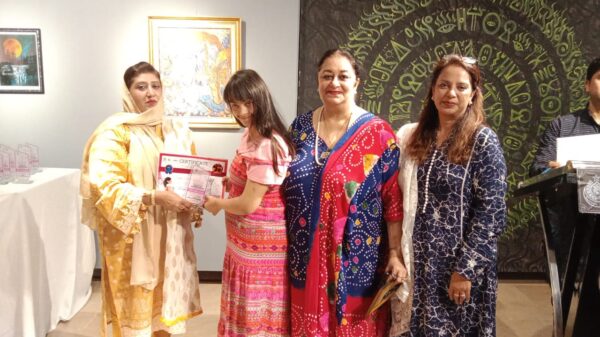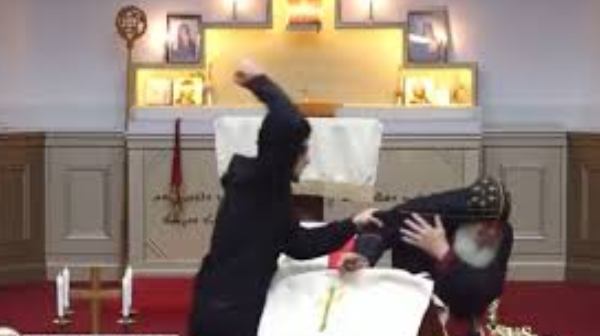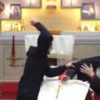Middle Ages Christian Europe: From Turbulence to Enlightenment
Under the dark shadows of Hundred Years’ war (1337 – 1453AD), dawn of Renaissance was unfolding in Italy during the fourteenth century Europe. Renaissance ushered in cultural and scientific awakening. It brought an emphasis on science and scientific proof instead of relying on what religious authorities said.
In the field of religious thought and experience, the Renaissance opened the gates to a new religious world through the Protestant Reformation. It weakened the idea that Church was the only source of religious knowledge. The Reformation helped the Scientific Revolution because it placed less emphasis on the supernatural, and greater emphasis on knowledge. Reformation and Renaissance were moving forward in a whirlwind which in many ways created chaos among Commoners.
Reformation was a phenomena which occurred in Western Europe, essentially a Protestant revolt of North against Catholic South. Martin Luther (1483 – 1546 AD), a German professor of theology and religious reformer was the catalyst of the 16th century Protestant Reformation movement. Disgruntled by the clergies’ lavish living and corruption in contrast to the simplicity of Christ, he saw through what Bible said and the Church practices of the time. Luther through Gospel preached forgiveness which can be earned by faith alone. He introduced two major changes: One, salvation is a gift of God and an act of faith which can’t be earned, and second, Bible is the only source of religious authority. Luther rejected the seven sacraments, and kept only the Holy Communion and Baptism.
Catholics venerate saints and Virgin Mary and confess their sins to a priest. They accept precedence established through centuries by the Church and follow the Pope in Rome as final authority. They maintain a time honored element of elaborate rituals and mysticism that enriches their religious experience. For Protestants, worship style became different and purged their Churches of holy relics and rituals and reduced the former role of ordained clergy. Rather than going through Saints, Mary and ordained clergy, Reformist access God through Bible study and personal prayers.
Under the influence of Reformation, protests were launched against Simony, i.e., holding of multiple church offices by one person, episcopal vacancies, and the sale of indulgences. Protestants attacked Catholic churches and removed symbols (according to them idolatry) from churches. Monks and nuns left churches and got married, even Martin Luther lived a worldly life, got married and had children. In 1521, at the Diet (assembly) of Worms, Germany, Martin Luther was given a hearing by the Catholic Papacy in the presence of Emperor of Rome but was convicted for heresy. The more the Catholic Rome suppressed Martin Luther, the more he became defiant. His mass publications utilizing newly invented printing press proliferated among the Germans. Martin Luther translated the Bible into German and it reached common man and literacy sky rocketed.
Catholic Church responded by counter-reformation movement; by heresy trials, the exiling of protestant population from Catholic lands, the seizure of children from protestant parents for institutionalized catholic upbringing, the listing of prohibited books, Spanish inquisition and a series of wars. All protestant doctrinal objections and changes were uncompromisingly rejected by the Pope.
War of ideas turned into real wars, smaller kings broke away from Roman Emperor’s tutelage. Power, money and land grabbing by smaller kings fanned the 100 Years religious wars. Peasants revolted against their lords. In Germany, especially, breaking away from Rome made them independent of Bishops and priests who were above secular laws. Financial offerings to Rome could now be stopped. Protestant conversions made them richer since the church land (biggest land owners of Europe) could then be confiscated.
Lutheran protests had unleashed a free for all wars by princes and kings jockeying for more power. These wars were mainly in German regions lasting from 1518 to 1548. Even the most powerful Roman army defending Catholicism was exhausted by these wars. They all signed a peace treaty in 1548 thence every ruler was free to choose whether he wants to adopt Catholicism or Protestantism. Europe was divided into Protestant North and Catholic South.
John Calvin in Geneva also preached reforms. Presbyterianism spread to France and Netherlands and beyond. King of Sweden, Gustav and King Henry the VIII of England also broke away from Rome. Newly established Church of England crushed Catholic Revolt. Scotland adopted Calvinism and professed everyone can read Bible. Jesuit of Spain remained Catholic battling corruption inside the Church and heresy outside. In Switzerland and Holland, reformed churches were made simple inside by removing statues and other religious symbols and pulpits became prominent in bringing the word of God directly to people. In protestant majority Northern Europe, Catholics went into low profile.
After Martin Luther’s death in 1546, reformation had brought fundamental changes in Western society. With the weakening of church influence, secular forces and science in Europe flourished lasting till 20th century. Literacy across Europe spread freely. Capitalism thrived in Northern Europe fumed by protestant work ethics.
During late Renaissance period, religious division of Europe had Catholics, Lutheran, Calvinists, Anglican, Bohemian and Moravian Brethren, Anabaptists, Eastern Orthodox and Islamists, all living in close vicinity in Europe.
Simultaneous to the counter-reformation, the Catholic Reformation resulted in improvements in art and culture, anti-corruption measures, founding of Jesuits, establishment of seminaries, a reassertion of traditional doctrines and the emergence of new religious orders aimed at both moral reform and new missionary activity. Spanish mysticism and French school of spirituality prevailed in South Western Europe. Saint Pius V encouraged disbursement of alms to the poor, charity, building hospitals, consoling the poor and sick and supporting missionaries became the humane face of Catholic reformation.
Age of Discovery gave fresh opportunities for Catholic missions in the Americas and colonies in Africa and Asia, infused a new life to the spread of Christianity among the heathens.
In 1633, trial of Galileo is considered a defining moment in the history of relationship between Church and Science in Europe. Galileo supported Copernican Heliocentric Theory of Universe, which proposed that Earth and other planets revolve around the Sun, a sacrilege to Church beliefs of the time. Galileo agreed to plead guilty to a lesser charge in exchange for a more lenient sentence. He was sentenced to prison and remained under house arrest till his death in 1642. His explanations resulted in controversies over theology, astronomy and philosophy and was banned to spread his theories.
Protestants’ colonization in the New World was heralded by English Puritans. Considering themselves as pilgrims, left England to escape religious persecution and sailed out to the New World hoping for a Puritan Utopia. The Puritans believed that God had formed a unique covenant with them, that God expected them to live according to the Scriptures, to reform the Anglican Church, and to set a good example that would cause those who had remained in England to change their sinful ways.
Revivalism refers to Calvinist and Wesleyan revival called the great Awakening in North America during the late modern period (1750-1945). Calvinism is a major branch of Protestantism, a practice set down by John Calvin emphasizing the sovereignty of God and the authority of the Bible.
The first great awakening was a wave of religious enthusiasm among Protestants in the American colonies (1730-1740). The second great awakening (1800-1830s), unlike the first, focused on the unchurched and sought in them a deep sense of personal salvation as experienced in revival meetings. The third great awakening began from 1857 and was most notable for taking the movement throughout the world, especially English speaking countries.
Other significant developments include Restoration which refers to the belief that a purer form of Christianity should be restored using early Church as a model. They believed that Christianity had deviated from the true, original Christianity. Jehovah’s Witness movement founded by Charles Russell & Latter Day Saint movement (also known as Mormons) believed that Joseph Smith was chosen to restore the original organization established by Jesus.
In the Russian Empire, the Russian Orthodox Church held a privileged position, although the Church reform of Peter I in the early 18th Century had placed the Orthodox authority under the control of the tsar. The Bolsheviks and other Russian revolutionaries saw the Church as an enemy of the people. Criticism of atheism was strictly forbidden and sometimes led to imprisonment.
Liberal Christianity is an umbrella term covering diverse, philosophically informed religious movements and moods within late 18th, 19th and 20th century Christianity. Fundamentalist Christianity was a movement that arose mainly within Britain and American Protestantism in the late 19th and early 20th century in reaction to modernism and certain liberal Protestant groups that denied doctrines considered fundamental to Christianity.
Among the contemporary Christianity, the 21st ecumenical council of the Catholic Church allowed that mass may be celebrated in the vernacular as well as in Latin. Ecumenism broadly refers to movements between Christian groups to establish a degree of unity through dialogue. Christian fundamentalism developed into a movement to reject the radical influences of philosophical humanism. Especially targeting critical approaches to the interpretation of the Bible, as well as blocking in roads into the Church by atheistic scientific assumptions. More moderate among this group are called Evangelical. This sums up the history of Christianity till the present times. Ends










